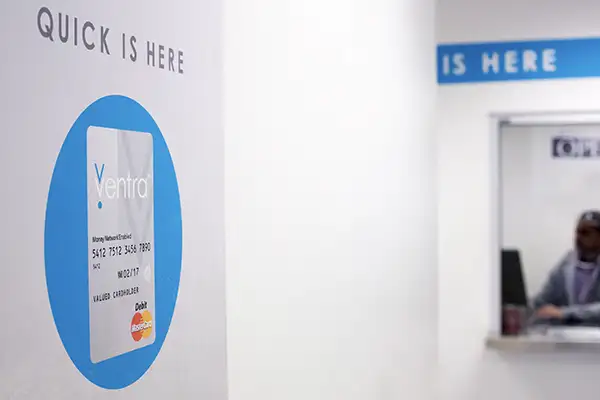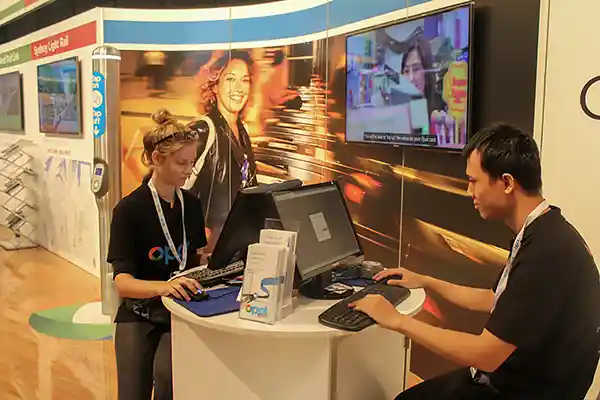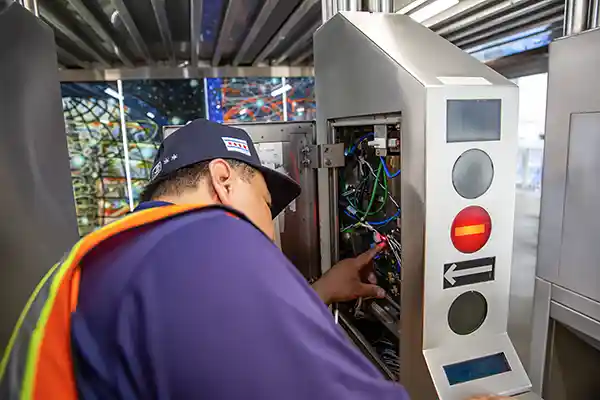The way riders pay for transit is rapidly evolving. As technology evolves and passenger expectations shift, transit agencies worldwide are prioritizing fare collection system modernization. According to Straits Research, the global fare collection market will expand from $8.97 billion in 2024 to nearly $27 billion by 2033 — a clear signal that the pace of change isn’t slowing down.
When implementing a new fare collection system, transit agencies have a unique opportunity to increase ridership, improve access to underserved communities, reduce fare evasion, lower operational costs, and enhance the overall customer experience. However, getting implementation wrong can leave agencies with a costly and disruptive system overhaul — without any noticeable benefit to the end user.
Cubic has partnered with transit agencies around the world to deliver some of the industry’s largest and most complex ticketing projects — with more than 400 transit deployments globally. Through those projects, we’ve learnt what works, and what doesn’t when it comes to effectively implementing new technology including managing change, engaging stakeholders, and delivering results.

Modernizing your fare collection system isn’t just a technology upgrade — it’s a transition for the entire community. By prioritizing simplicity, clear communications, operational readiness, and rider support, agencies can not only avoid common pitfalls but turn system upgrades into a true customer experience triumph.
If you’re a transit agency leader aiming to improve the customer experience, here are five lessons to keep top of mind as you consider upgrading your system.
Technology Changes Fast. Futureproof for It.
Fare collection technology evolves quickly: just in the last decade, we’ve seen the rise of contactless payments, account-based ticketing, mobile ticketing and more comprehensive multimodal integration. Future-proofing your system by planning for long-term flexibility – not just the current state of the art – will help you keep pace with these innovations down the road. Through prioritizing flexibility, scalability and openness, Agencies can ensure they are able to quickly and easily undertake progressive system upgrades when new technologies arise rather than forcing a full system replacement.
 The key is simplicity. Agencies who first simplify their fare and operating rules will see an easier transition for both staff and riders when implementing new technologies or processes. The way agencies design the services they provide is just as important as the design of the technology itself.
The key is simplicity. Agencies who first simplify their fare and operating rules will see an easier transition for both staff and riders when implementing new technologies or processes. The way agencies design the services they provide is just as important as the design of the technology itself.
Rider Education is Non-negotiable.
No matter how intuitive a new fare system might seem internally, it requires a thoughtful, well-resourced education and outreach strategy to ensure riders adopt it successfully. These plans should be developed well in advance of launch and be carefully tailored to the needs of diverse rider segments — from daily commuters and tourists to early adopters, seniors, and individuals requiring accessibility support.

Messaging should be consistent, simple, and omnichannel, with clear information regarding what’s changing, when those changes take effect, and what actions riders need to take. Education campaigns should include on-site customer support, multilingual signage, how-to videos and digital guides addressing key behavior changes.
By proactively answering common rider questions — from “how do I tap?” to “where can I check my balance?” — agencies can help reduce confusion, increase adoption rates, and deliver smooth transitions for their communities.
Prepare Your Staff and Internal Stakeholders.
Internal readiness is just as important as public education. Operators, customer service agents and field service teams will be on the front lines of the transition. The most successful agencies:
- Engage stakeholders early and gather input across departments to address concerns and improve buy-in
- Invest in hands-on training and real-world user testing with the new system — for both staff and rider groups — to refine processes and troubleshoot potential pain points
- Establish a continuous improvement cycle post-launch to address issues and incorporate feedback efficiently

From executives to inspection officers and bus drivers, every team member can participate in hands-on system walkthroughs, kiosk testing, and scenario training. Their direct input will help identify UI improvements, expand support, and refine error-handling. Internal alignment ensures an agency team becomes ambassadors for the new system, rather than skeptics.
Plan for Crisis Management and Communications Early.
Even the best-planned rollouts experience hiccups. Managing public expectations and preparing for those moments in advance ensures minor issues don’t become major problems.
When possible, agencies should implement phased rollouts to allow for controlled testing, faster issue resolution, and smoother scaling to wider populations. They should also take time to develop incident response protocols and proactive communication plans; that way, they’ll be able to respond immediately in the event of disruptions, delays or fare system outages.
Agencies should also recognize who their audiences will be in the event of disruption: riders, employees and the media. Agency leadership should seek to be transparent in advance about the scope of changes and about plans for responding to any issues. That proactive communication will help to build goodwill in the event of an incident.
Support Your Staff and Riders Throughout the Transition and Beyond.
The periods immediately before, during, and after go-live are when operational support matters most. Transit agencies should never underestimate the need for customer service and make plans to increase staffing at ticket windows, call centers, and key transfer hubs in the lead-up to launch and in the critical first weeks of transition. Mobile “ambassador” teams equipped to answer questions and assist with new processes can be invaluable for maintaining rider confidence and resolving issues in real time.
At the same time, agencies should ensure strong digital self-service resources — including comprehensive FAQs, fare calculators, balance transfer portals, and mobile app support — are accessible and prominently promoted. A well-publicized retail network and reliable online purchase options can also help alleviate lines and confusion at traditional service points.
Finally, heightened network monitoring and clear interdepartmental communication protocols are essential for quickly identifying and addressing issues as they arise, ensuring services remain consistent and riders experience a seamless transition.
When implementing any technology change – large or small – it is important to bring both internal teams and the broader community on the transition journey with you. By acknowledging people embrace change and adapt to new technologies at different rates and ensuring they are supported every step of the way you can turn technology upgrades into true customer experience successes.
At Cubic, we’ve seen firsthand how these strategies lead to smoother launches, higher rider satisfaction, and measurable improvements. Learn more about how Cubic is helping modernize fare collection by contacting our team.